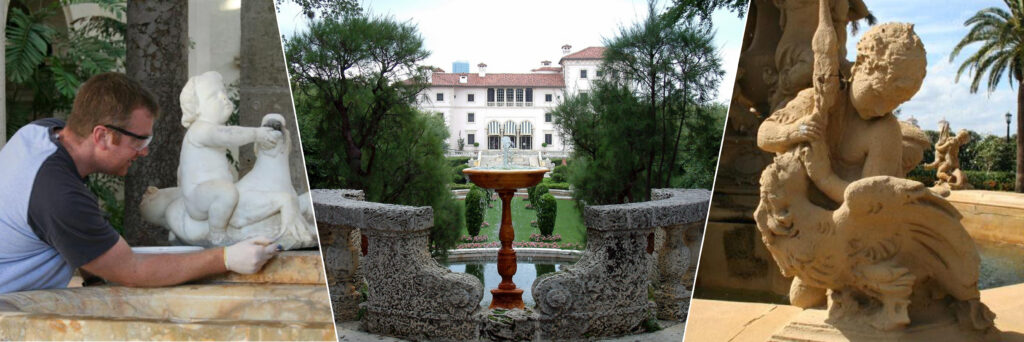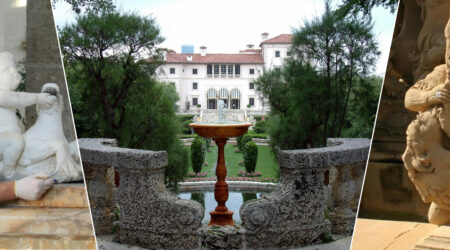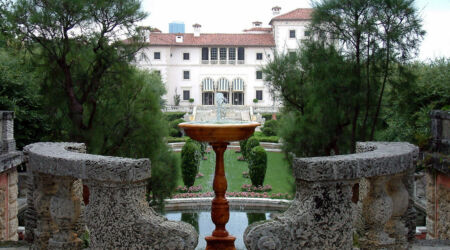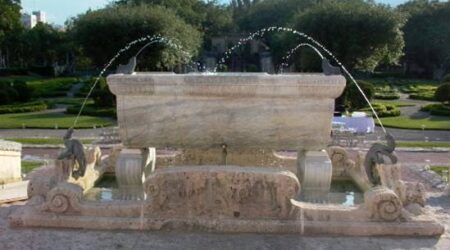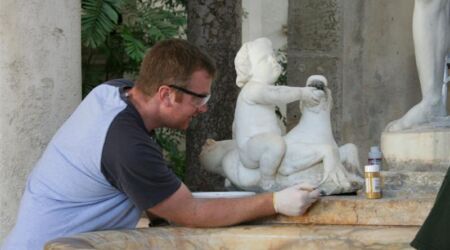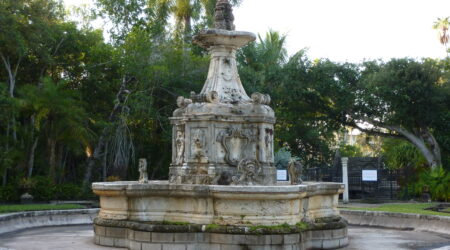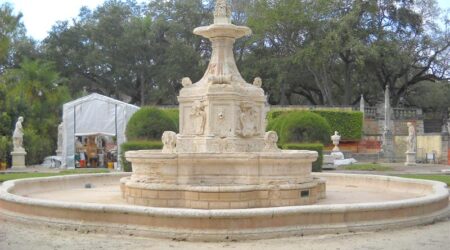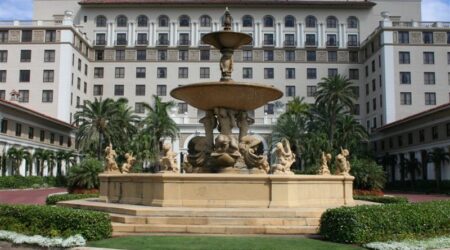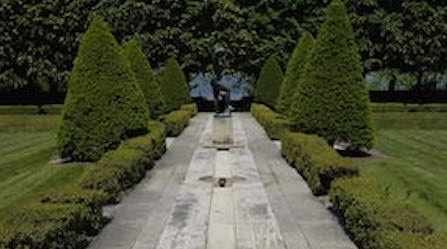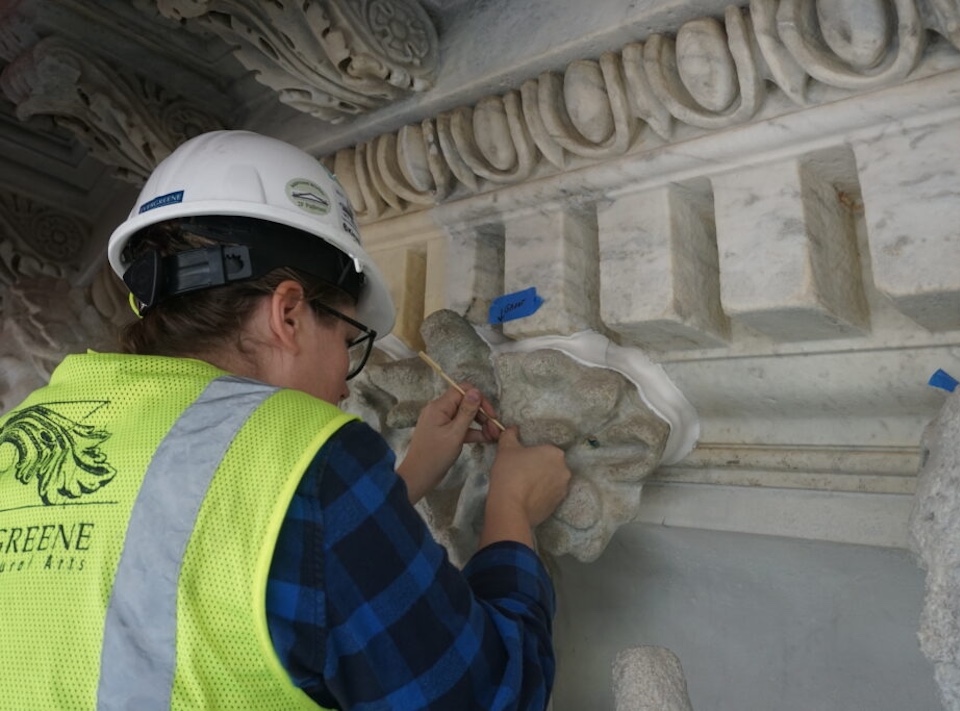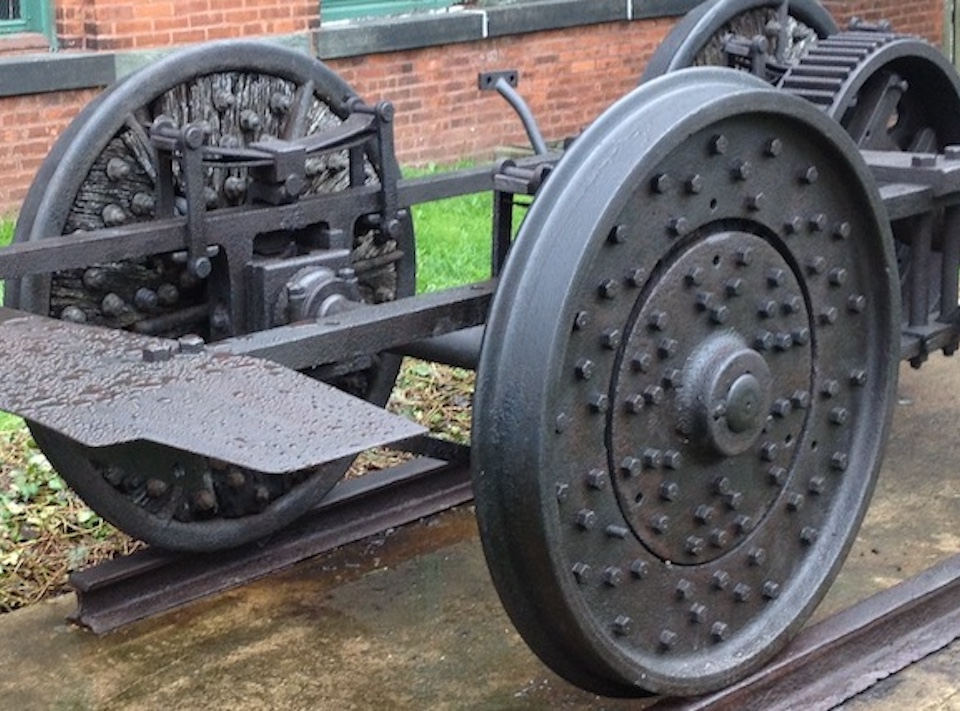Fountain conservation involves treating historic elements within an active, public environment whose operational needs may directly conflict with those of the preservation of the fountain’s materials, including potential antique and ancient artifacts. Changes in visitor safety requirements, water conservation, ecological sustainability, and display goals also affect the preservation efforts of historic fountains. Assessing and treating historic fountains in tropical environments, requires holistic solutions that consider the many, complex factors that influence the development of appropriate conservation treatments.
At four fountains at Vizcaya Museum & Gardens that incorporate Roman or Renaissance elements within their early 20th century construction as well as cast stone fountains in Palm Beach from the 1920’s the water and display characteristics, mechanical systems, on-going safety concerns, and material and environmental interactions have led to deterioration. Testing and analysis in our conservation labs were performed to understand the conditions and their causes, and review the treatment options to remediate them. In some cases, we have had the opportunity to revisit the fountains after several years and to assess the longer term results.
One of the defining characteristics of Vizcaya is the integration of antiques into the early 20th century architectural and landscape structures but those elements had suffered grievously. The Cascade Fountain includes a Renaissance baptistery fount that was so heavily stained with iron from rusting pipes that the marble was unrecognizable. The Frog- and Bacchus Fountains each incorporate Roman sarcophagi that were covered with a lime scale that had precipitated out of the water and deposited on the marble surfaces. The Sutri Fountain was a reconstructed Renaissance fountain that had lost substantial features from erosion and leaking from failed waterproofing. Structural, water condition, piping and display studies were all undertaken to understand the interactions that had lead to the failures. Tests were performed to determine means of repairing the historic stones, waterproofing the basins, removing the lime deposits and providing display effects that would minimize their return. The findings led to the recommendations for structural, piping, water treatment, and material repairs specific to each fountain.
Cast stone fountains from the 1920’s, including the Mizner- and Breakers Fountains in Palm Beach, experienced disfiguring loss of detail of cast stone sculptural and structural elements due to water conditions, erosion, and rusting rebar. Petrographic analysis of the cast stone was performed to characterize the material for replication and repair. Embedded salts and carbonation of the cement paste were also studies. Long histories of inappropriate maintenance and repair means, and current wishes for heightened water display and lighting effects influenced recommendations for preservation or replacement of historic materials, equipment upgrades, waterproofing and other concerns. An understanding of the cast stone mix, combined with the use of original design drawings, allowed for the client’s wishes for accurate replication of missing and damaged elements and restoration of original design and display intent during restoration.
